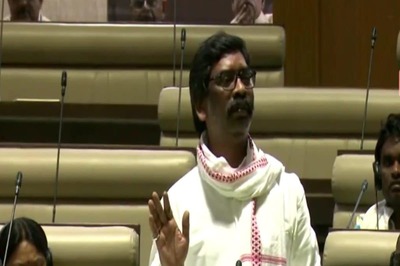
views
RBI Monetary Policy October 2024: The RBI Monetary Policy Committee (MPC) maintained the repo rate at 6.50% on October 9, 2024. As a result, there will be no immediate impact on real estate or home loan EMIs. With the repo rate remaining unchanged, banks are unlikely to adjust their lending rates soon, meaning your EMI will stay the same.
RBI MPC Meeting LIVE Updates
RBI announced the policy stance as neutral from the earlier withdrawal of the accommodative monetary.
The decision of the RBI Governor Shaktikanta Das-headed six-member Monetary Policy Committee (MPC) was announced on Wednesday.
The repo rate set by the Reserve Bank of India (RBI) plays a significant role in determining home loan interest rates in India.
Will Home Loan Interest Rates Increase or Decrease?
Experts said that the RBI’s decision to keep the repo rate unchanged carries significant implications for the home loan market.
EMIs remain manageable
Manju Yagnik, Vice Chairperson of Nahar Group and Senior Vice President of NAREDCO Maharashtra said, “The RBI’s decision to maintain the repo rate at 6.5% represents a significant positive step for the real estate sector, providing essential stability amid ongoing global economic uncertainties.”
Yagnik added that this consistency is particularly crucial as we approach the festive season, which is traditionally a peak time for home purchases.
By keeping borrowing costs steady, EMIs remain manageable, encouraging potential homebuyers to invest in property, especially in the affordable housing segment, Yagnik added.
Furthermore, this stability will benefit developers by improving cash flow and reducing borrowing expenses for ongoing projects.
Here’s how a change in repo rate impacts home loans:
Impact on Interest Rates:
Repo Rate Cut: When the RBI reduces the repo rate, borrowing money from the central bank becomes cheaper for commercial banks. This often leads banks to reduce the interest rates they charge on loans, including home loans. This can make homeownership more affordable for borrowers, as lower interest rates translate to lower EMIs (Equal Monthly Instalments).
Repo Rate Hike: Conversely, if the RBI increases the repo rate, borrowing costs for banks rise. To maintain profitability, banks typically raise their lending rates, including those on home loans. This can result in increased EMIs for existing borrowers with floating-rate loans and higher interest rates for new home loan applicants.
Impact on Existing Borrowers:
Floating Rate Loans: The impact of repo rate changes is felt immediately for borrowers with floating-rate home loans, which are the most common type in India. Their interest rates are directly linked to the repo rate, so a change in the repo rate is reflected in their EMIs.
Fixed Rate Loans: Borrowers with fixed-rate home loans are not immediately affected by repo rate changes. Their interest rate is locked in for a specific period (usually 1-5 years). However, once the fixed-rate term expires, their interest rate will be reset based on the prevailing repo rate at that time.
Although the repo rate has remained constant for some time, the possibility of a rate change by the central bank in the next 6-12 months cannot be ruled out.
The unchanged repo rate and potential rate cuts in upcoming MPC meetings are positive signs for home loan borrowers, making it an opportune time for them to make home-buying decisions and for existing borrowers to repay their loans and reduce their burden.
Interest rate fluctuations significantly impact real estate demand. Lower interest rates typically increase demand by making borrowing more affordable, which can drive up property prices. Conversely, higher interest rates tend to reduce demand, leading to softer property prices.
RBI and Inflation
One of the primary goals of the RBI’s monetary policy is to control inflation and keep it within a target range. Currently, inflation, particularly food inflation, remains above the RBI’s target of 4%. Lowering the repo rate could potentially add to inflationary pressures in the economy.
While a rate cut might stimulate economic growth, the RBI is prioritising controlling inflation at this point. They believe that maintaining the current rate helps manage inflation while still allowing for some economic growth.


















Comments
0 comment